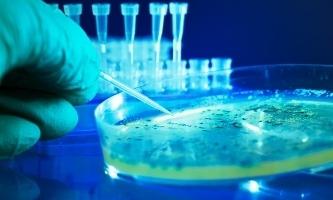Dysentery is the most common intestinal infection. Its causative agents are Shigella bacteria . But in medicine, a form of dysentery is also known, which is caused by the simplest amoeba. It is called amoebiasis.
Dysentery, like most intestinal infections, is characterized by symptoms of intoxication (headache, weakness) and
dyspeptic disorders (dehydration, vomiting and
loose stools). The most common disease among children. In infants, it is extremely rare, since during this period the baby receives strong immune protection from the mother with breast milk. If the disease is diagnosed in a child under one year old, then in most cases it is due to infected dairy products or poor quality water.
Dysentery is a seasonal infection. Her outbreaks are recorded in the summer, during the holiday season on ponds. The main route of infection is water. But do not forget that a child can become infected by playing in sandboxes from other kids through toys. This mode of transmission of the disease is called contact household. To prevent infection, it is enough to follow the rules of personal hygiene.
It can be argued that dysentery is a disease of dirty hands. As a rule, its sources are people who are sick or carriers of bacteria that do not have symptoms of infection. Pathogenic microbes enter the environment with feces. This disease is anthroponosis, that is, it is impossible to get infected from animals. Allocate acute and chronic dysentery. In chronic carriage, clinical symptoms may be unclear. In this case, only through laboratory tests can a disease be detected.

Dysentery can occur in severe form, causing dystrophic changes caused by the loss of fluid and important nutrients. This infection causes damage to the intestinal mucosa - hemorrhagic, catarrhal, ulcerative processes are formed, as a result of which micro scars remain. A person becomes infected after the penetration of dysenteric bacteria into the large intestine. Having reached this department, microbes are attached to the cells of the mucous membrane using cilia. Most often, the pathological process spreads to the lower part of the intestine, affecting the sigmoid region. Dysentery is a toxicological infection. The toxin causes a number of pathological changes. An imbalance of water-salt metabolism appears, which leads to symptoms such as dehydration and loose stools.

In order to protect your baby from infection, you must follow the basic rules of personal hygiene. After each walk, you should wash your hands thoroughly. Do not eat unwashed fruits and vegetables bought at the market. Drink only boiled water and milk. Prevention of dysentery does not require any special measures. Do not swim in dirty water. During outdoor recreation, make sure that children do not swallow river or lake water. After swimming in the ponds upon returning home, you must definitely take a shower.